How to Save A Life in an Emergency (Tips for Africans)
By: Elizabeth Obigwe, B.Sc. Anatomy. Freelance Writer; with medical review and editorial support by the DLHA Team
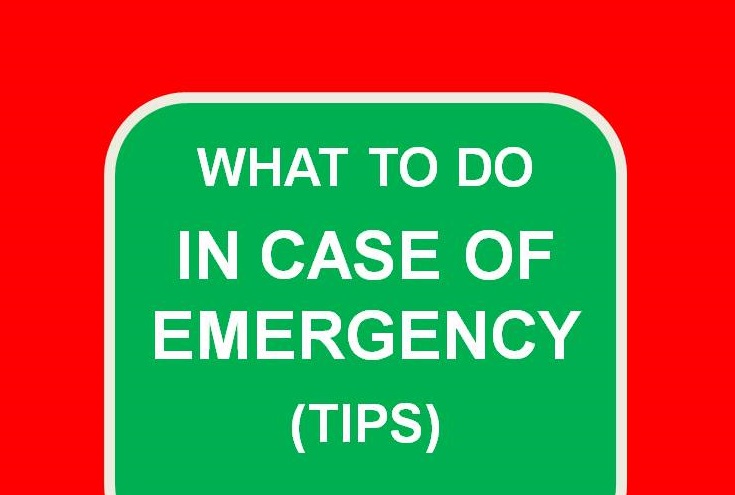
First Aid tips for saving lives in an emergency
Emergencies can happen without warning, and knowing how to respond effectively can make the difference between life and death. Unfortunately, many people especially within Africa do not know what to do in the face of life-threatening situations. [1]
Different situations require different kinds of first aid and it is important to know these life-saving tips just as well as we know our road signs, or even better.
Research has shown that emergency care can address half of deaths and one-third of disability in low-and-middle income countries and first aid is an important part of out-of-hospital emergency care. [1] Hence, it is crucial for non-medical (lay) Africans to know and be able to perform some life-saving techniques.
This article will discuss emergency response tips for the following situations;
- Severe Respiratory distress (e.g. Asthma attack)
-
Emergency Response for Heart Attack
When a person has a heart attack, it means that there is a blockage in the blood vessels that supply blood to the muscles of the heart. This lack of adequate blood supply can damage the heart muscles and threaten the life of the victim.
Symptoms of a heart attack are:
- Chest pain at the centre or left side of the chest. It may feel like heaviness, pressure, tightness or squeezing.
- Pain in other parts of the body - It may feel as if the pain in the chest is moving to other parts of the body like the arms (one or both), back, neck, jaw, or abdomen.
- Other possible symptoms are shortness of breath, dizziness, sweating, coughing or wheezing, extreme anxiety, nausea or vomiting.
What should you do if you witness someone having a heart attack? [2]
- Help the person sit, preferably on the floor with their knees bent while supporting their head and shoulders with cushions.
- Loosen any tight clothing.
- If the person is conscious, ask if they have any medicine that they take for sudden attacks. If they do, give it to them.
- Call your local emergency number immediately.
- If there is no emergency response number in your area, take the person to the nearest medical facility.
- If the person becomes unconscious and stops breathing or does not have a pulse, start CPR (Cardiopulmonary Resuscitation) immediately.
- Continue CPR until the person shows signs of life such as movement or sound, or until help comes.
-
How to Help Someone Drowning
Except you have been trained to do so, do not try to jump into the water to save a drowning person even if you are a good swimmer. [3] This is because most people panic when they are drowning and may push you under the water, thereby endangering your life too. You can throw in a floating device such as a rescue tube or life jacket, or extend a long pole and call on the person to hold onto it.
- Once the person is on land, check if they are breathing.
- If the person is unconscious but breathing, put them in recovery position and monitor their breathing to make sure it is normal.
- If the person is not breathing, first open their airway and give 5 initial rescue breaths, then start CPR.
- Call for help and continue CPR until help comes, the person shows signs of life, or you get tired.
-
How to Help Someone Choking
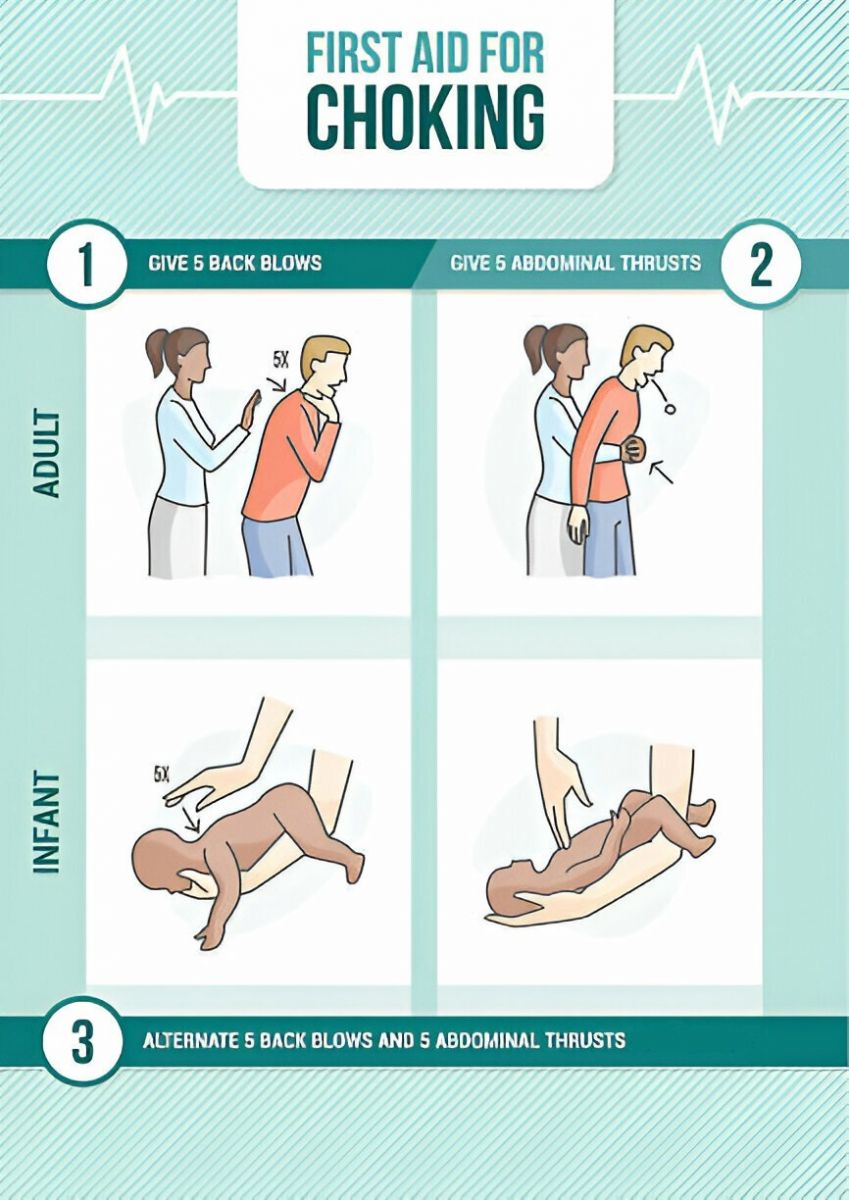
Illustration of first aid for choking. Click on image to enlarge.
When a person is choking, it means that something - food or an object - has blocked their airway. Choking can be mild or severe. In the case of mild choking, the airway is partially blocked and the victim should be able to cough, cry, speak or breathe. Encourage the person to cough and spit out the object from their mouth. If this does not work, administer back blows.
If the choking is severe, the person will not be able to cough, talk, cry or breathe. Start back blows immediately followed by abdominal thrust known as the Heimlich manoeuvre. [4]
How to give a back blow
- Stand behind and to the side of the person. Bend them forward, supporting their upper body with one of your arms across their chest. For children, kneel down behind them.
- Use the heel of your free hand to give 5 back blows on the person's back, between the shoulder blades. The blows should be firm but not too hard, as excessive force may cause further harm.
- In the case of an infant, sit down and lay the baby face down on your thigh or your forearm, which should be resting on your thigh. Support their head with your hand, tilting it a little lower than the trunk, then start to give back blows.
- Be gentle with smaller children and adjust the force of the back blows accordingly.
- If the blockage persists after 5 back blows, move on to abdominal or chest thrusts.
Heimlich maneuver steps
- To perform an abdominal thrust, Position yourself behind the person with your arms around the waist.
- Make a fist and place it just above the navel, thumb side in.
- Grab the fist with your other hand and push it inward and upward at the same time.
- Perform five of these abdominal thrusts and if the object is not expelled, give back blows again. Keep alternating till the person can breathe or cough on their own.
How to perform Chest Thrust
- If the person choking is a pregnant woman or a child less than 1 year old, you should not give them abdominal thrusts. Do a chest thrust instead.
- Position the infant face up and resting on your forearm and thigh so their head is lower than their trunk.
- Place two fingers at the centre of their breastbone and perform five quick chest thrusts.
- For a pregnant woman, place your hand a little higher on her torso, around the base of her breastbone and press hard into the chest with a quick thrust.
-
Handling Severe Bleeding and Wounds
In the event of an injury that leads to severe bleeding, you should aim to stop further bleeding as soon as possible. Depending on how rapidly they lose blood, a person can bleed to death in 5 minutes.
Here are what you can do to stop a bleeding. (5)
- First, protect yourself and the victim by wearing a disposable glove or plastic bag to prevent possible cross infection.
- Check if there is an embedded object in the wound. If there is, do not remove it as it may be helping to reduce bleeding. Instead, apply pressure around the object - not over it to prevent pressing it down.
- If there is no embedded object, use a clean cloth or gauze to apply direct pressure to the wound till the bleeding stops, then secure the padding/dressing with a bandage or another clean cloth to maintain pressure and prevent further bleeding.
- If pressure cannot control the bleeding, and the injury is on any of the limbs, you may tie a tourniquet using a bandage, necktie or scarf (watch video). If the first tourniquet does not stop the bleeding, you may apply another one above it. However, do not remove the first padding you applied.
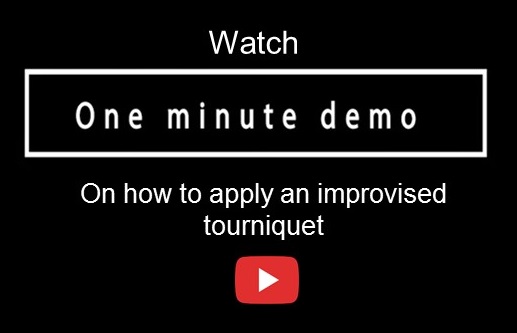
- Do not wash the wound as it can cause further bleeding and possibly lead to infection.
- Continue monitoring the person until help comes or you take them to the nearest medical facility. If they become unconscious, begin CPR.
-
How to Help Someone Having a Seizure
Seeing someone have a seizure is scary to many people, who may likely offer inappropriate assistance to the seizing patient out of fear and confusion. But there are some basic things you can do to provide first aid care to a seizing patient, when you witness one. (6)
- Be calm and do not try to stop their jerking movement except when you are trying to keep them away from hurting themselves (e.g. from hard and dangerous objects).
- Also, do not put any object in their mouth during the seizure.
- Time how long the seizure lasts.
- When the seizure stops, you can stay with the patient and calmly reassure them until they fully recover. Seizures usually last for 5 minutes or less.
- If the seizure stops and they do not wake up, loosen any tight clothing around their neck and put them in a recovery position. Also, get something small to cushion their head if they are on the ground.
- If they are awake, help them sit up, but do not give them anything to eat or drink until they are fully awake.
- It the seizure recurs repeatedly when the patient has not fully recovered or lasts longer than 5 minutes, call your local emergency number for an ambulance or get the patient to the nearest emergency center, hospital or doctor’s clinic.
-
Dealing with Burns and Scalds
Burns and scalds occur when heat damages the skin. It could be dry heat as in fire or something wet as in hot water. Burns and scalds have similar first aid and here are what you should and shouldn’t do when your someone suffers a burn or scald. [7]
- First, stop anything that is causing the burn. Be careful not to hurt yourself in the process.
- Cool the burn under running water for up to 20 minutes. This can help to reduce pain and scarring. However, be mindful not to cause hypothermia, a condition where the body temperature drops below 35 degrees Celsius. This is most likely to happen if you are cooling a large burn, especially in babies, children and the elderly.
- Remove clothing and jewelry around the burn, but leave anything that has stuck to the skin so that you do not cause further harm.
- Cover the burn loosely with cling film. Alternatively, you can use a clean, dry dressing or non-fluffy material. Ensure that the covering is not tight as swelling may make the injury worse.
- Do not pop blisters or apply anything to burns and scalds.
- Seek medical care immediately.
A stroke happens when the blood supply to the brain is cut off. It is life-threatening and needs immediate medical attention. First, to ascertain that a person has a stroke, use the BEFAST guide.
Balance - Patient may suddenly have trouble with balance and coordination
Eyes - Patient may complain of sudden bluriness, partial or total loss of vision in one eye or both
Face - Check if their eye or mouth has drooped to one side. Also, they may not be able to smile if you ask them to.
Arms - Ask them to lift both hands. If they have a stroke, one hand may drift downwards.
Speech - Ask them to say something. Is their speech slurred or are they unable to talk?
Time - If you notice any of these symptoms, call an emergency number immediately.
Here are what you should and shouldn’t do in the critical period of a stroke [8]
- Keep a record of the symptoms and their duration.
- You may encourage the person to lie down to improve blood flow to the brain and loosen any tight clothing to keep them comfortable.
- If the person has fallen, do not move them unless absolutely necessary.
- Do not give them anything to eat or drink.
- Call an ambulance or emergency service. If there is none available where you are, carefully move the victim to the nearest medical facility.
- A person with a stroke may not require CPR. But if they become unconscious, check for breathing and pulse and perform CPR if necessary.
-
Emergency Response to Electric Shocks
The following are steps that you can take to assist an individual that you witness having an electric shock: (9)
- Identify the source of the shock and turn off the power if possible. Do not touch the person until the power is turned off. If you can't turn off the power, use a non-conductive object like a wooden plank to move the person away from the source.
- Call for emergency medical assistance.
- Assess the person's responsiveness. If they are unresponsive, open their airway and check for breathing. If the person is not breathing, begin CPR.
- If the person is breathing normally but unresponsive, place them in recovery position to keep the airway clear.
- Cool any burns with cool running water for at least 10 minutes.
- Even if the person appears fine, seek medical attention as internal injuries can develop later.
-
How to Help Someone Having Severe Respiratory Distress (e.g., Asthma attack)
The following are steps that you can take to assist an individual that you witness to be in respiratory distress: [10]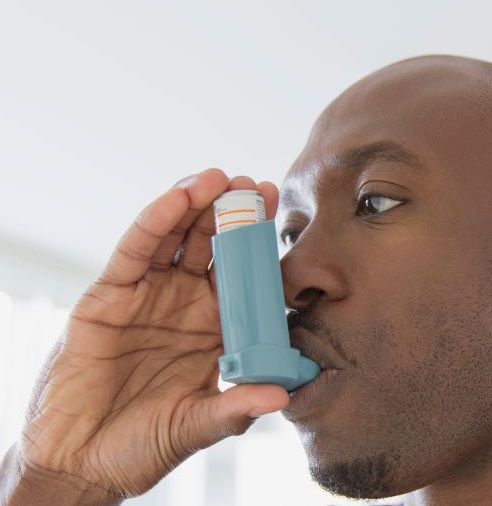
- Remain calm and encourage the person to stay calm as well. Panic can worsen symptoms.
- If there are any triggers, move them away from the triggers to avoid worsening their condition.
- Sit the person upright in a comfortable position and loosen any tight clothing.
- If there is an inhaler, have the person take 2- 4 puffs immediately. If symptoms do not improve after 2-3 minutes, have them take 2 more puffs of the inhaler.
- If there is no inhaler, encourage them to take slow, steady breaths.
- Do not have the person lie down, as this can make breathing more difficult. Sitting upright is generally most helpful for breathing problems.
- Also, do not take the person outside for fresh air if it is cold, as cold air can worsen symptoms.
- If symptoms continue or worsen, seek immediate medical treatment
-
How to Perform CPR (Cardiopulmonary Resuscitation)
Here are steps that you should can take to perform a CPR. [11] (Watch video)
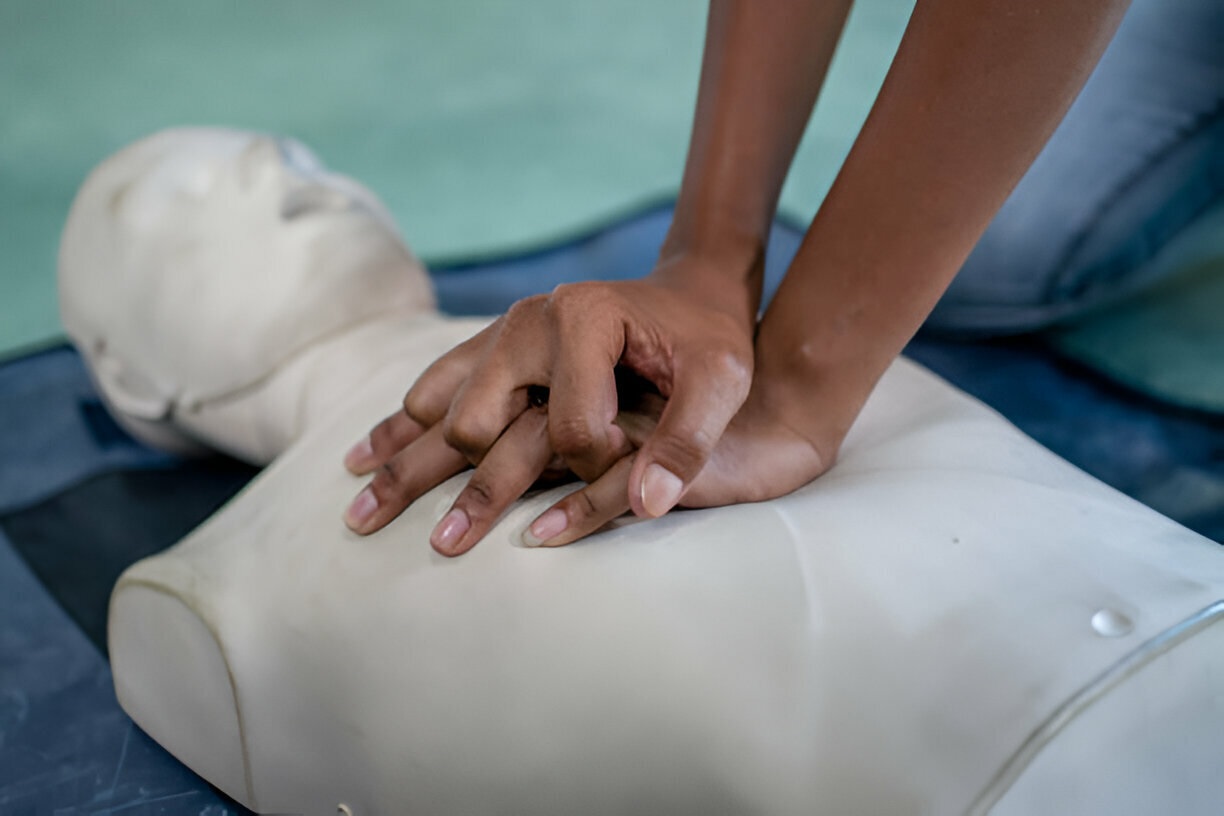
CPR demonstration on a manikin.
- Place the person on their back on a firm, flat surface.
- Open their airway by tilting their head back slightly and lifting their chin. If you see any object blocking the airway, remove it. Never perform a blind swap to avoid pushing objects further down.
- Check for breathing and pulse. If they are not breathing or only gasping, or if you don't feel a pulse on the side of their neck, begin chest compressions.
- To do chest compressions, place the heel of one hand on the centre of the person's chest. Place your other hand on top of the first and interlock your fingers.
- Give 30 chest compressions, pushing down at least 2 inches at a rate of 100-120 per minute.
- Open the airway again using the head-tilt/chin-lift technique. Pinch the nose shut and give two rescue breaths, each lasting about 1 second.
- Continue with cycles of 30 chest compressions and 2 rescue breaths until the person starts breathing or help arrives.
- If the person is a baby below one-year-old, use two fingers for the compression instead of the heel of your hand.
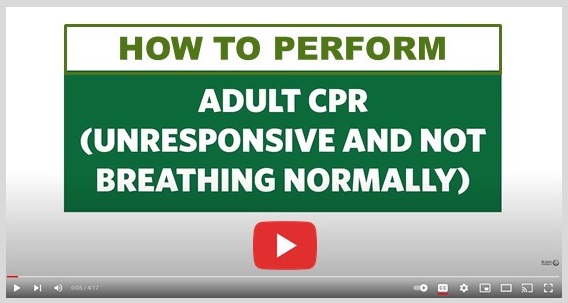
Click on image to watch.
-
How to Put Someone in a Recovery Position
Here are steps that you should take to put someone in a recovery position.

A black man in recovery position.
- Once you establish that a person is unresponsive but breathing normally, place them in the recovery position to help maintain the airway.
- Kneel next to them on the floor and remove their glasses and any bulky objects in their pockets that may pose discomfort when they lie on their side.
- Make sure both of their legs are straight. Then, take the arm nearest to you and place it out at a right angle to the body with the palm facing upwards.
- Bring the other hand across to the opposite side of the face and place the back of the hand against the cheek nearest to you.
- With your other hand, lift their far knee until the foot is flat on the floor. Whilst still pressing their hand against their cheek, pull the far leg and carefully roll the victim towards you and onto their side.
- Adjust the top leg so that it is at a right angle.
- Then, tilt their head back so that the airway remains open. If needed, adjust the hand on the cheek to help to keep the airway open.
When to Call For Help in an Emergency
The best time to call for help depends on the specific emergency situation and the condition of the person in need.
When a person's life is in immediate danger (e.g., they are not breathing, choking, or bleeding severely), you should try to provide first aid before calling for help as soon as possible.
In other serious but less immediately life-threatening situations, calling for help first is usually the best course of action.
Always consider the specifics of the emergency and use your best judgment. Moreover, if there is someone around, you can have them call for help while you administer first aid.
Conclusion
In an emergency, every second counts. The ability to remain calm, assess the situation, and take appropriate action can save lives. To be able to easily apply these first aid skills in an emergency situation, you need to practice them repeatedly and become conversant with them. However, note that these treatments are only first aid and it is often necessary to go for proper medical examination even after the person feels better.
References
1. Diango K, Yangongo J, Sistenich V, Mafuta E, Wallis L. Awareness, attitude and perceived knowledge regarding first aid in Kinshasa, Democratic Republic of Congo: A cross-sectional household survey. African Journal of Emergency Medicine. 2022 Jun;12(2):135–40. doi:10.1016/j.afjem.2022.03.001. Available from here.
2. NHS UK. First Aid - Heart attack. [Internet.2022 March 15]. Cited 2024 May 29.. Available from here.
3. NHS UK. First Aid - Choking. [Internet.2022 March 15]. Cited 2024 May 29.. Available from here.
4. American Red Cross Training Service. Emergency Steps and General Care Choking (Adult/Child). [Internet. n.d.]. Cited 2024 June 10. Available from here.
5. St. John Ambulance, UK. How to treat severe bleeding. [Internet. 2024 Jan. 29]. Cited 2024 May 29. Available from here.
6. NIH MedlinePlus Magazine. How to help someone who is having a seizure. [Internet 2021 Sept. 1] U.S. National Library of Medicine. Cited 2024 May 29. Available from here.
7. HSE Live. First Aid for burns and scalds. [Internet. Last reviewed 2022 Nov. 10]. Cited 2024 May 29. Available from here:
8. Higuera V. Do’s and Don’t’s when a loved one is experiencing a stroke. Healthline Media. [Internet, 2018 December 5]. Cited 2024 May 29. Available from here:
9. Safety First Aid. Electric shock first aid treatment. [Internet, n.d.] Cited 2024 Jun 6. Available from here.
10. Seladi-Schulman J. What to do when you have an asthma attack without an inhaler. Healthline Media; [Internet 2023 May 8]. Cited 2024 Jun 6. Available from here.
11. American Red Cross Training Service. Adult CPR Steps. [Internet. n.d.]. Cited 2024 June 10. Available from here
Published: June 11, 2024
© 2024. Datelinehealth Africa Inc. All rights reserved.
Permission is given to copy, use and share content for non-commercial purposes without alteration or modification and subject to source attribution.


